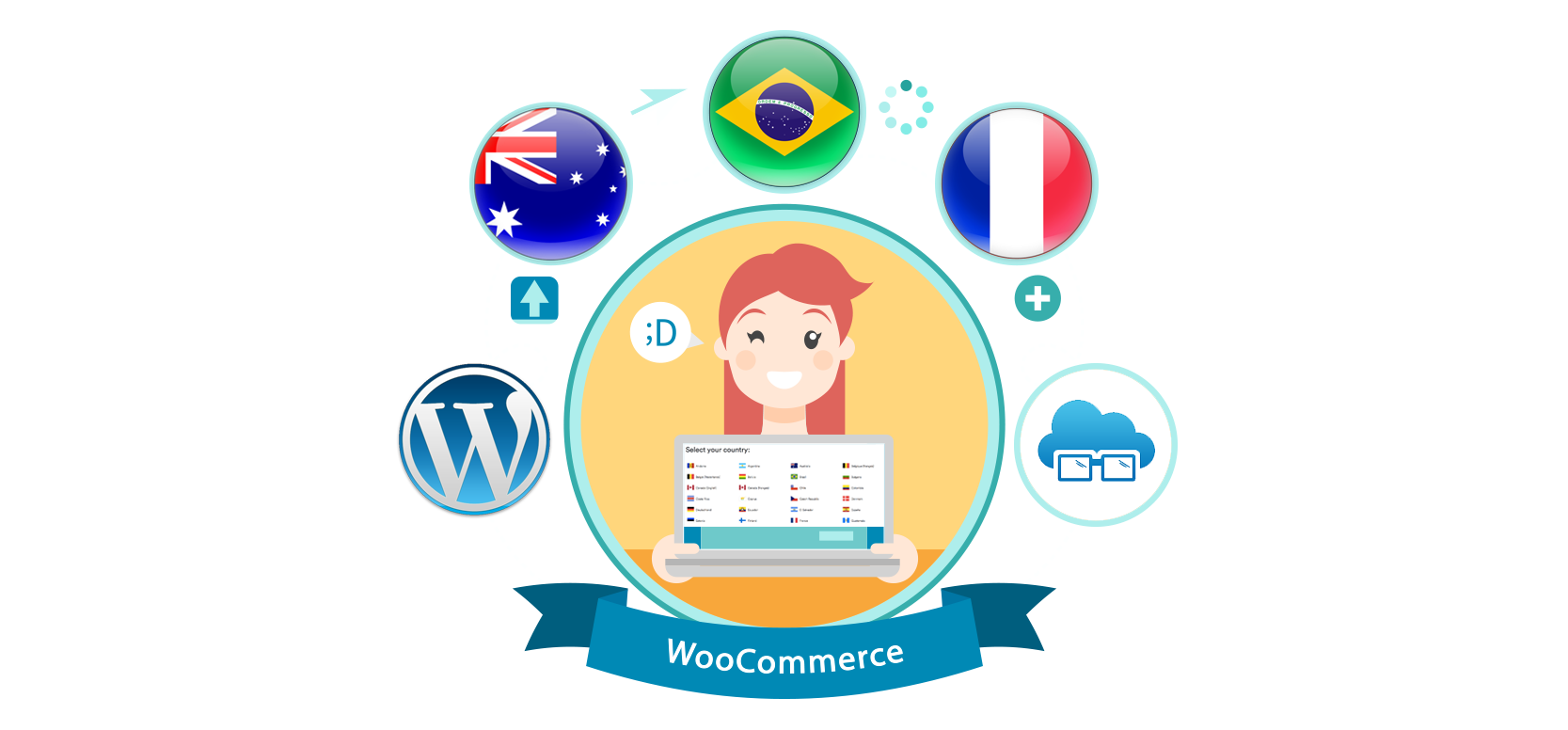
02 May WooCommerce Localization
If you are reading this article in another language than English, it has been automatically translated by our WordPress Multilingual Plugin.
Hence, Woocommerce comes localization ready from the moment it is downloaded. All you would require to make Woocommerce multilingual is the translation file for your language. Once you have translated the plugin itself, you would need to translate your own user generated content using a translation plugin.
Backend Woocommerce Localization
There are a number of ways one can translate the back end-of Woocommerce. You can read about the numerous methods here on the WordPress Codex. Thanks to numerous Woocommerce users, there are already a number of translations available on WordPress Project.
Preparing WordPress for your Language
Assuming that you have not done so already, you would want to prepare WordPress for your own language. This can be done by going to your Dashboard, selecting “Settings” and then “General”. Assuming that the translation file exists for your chosen language, your online store will be displayed in your own language.
If, however, the translation file does not exist, it would have to be created. This will be explained below.
Downloading Woocommerce Translations
Thanks to the WordPress initiative, fellow users would have already translated a great deal of Woocommerce string elements. This can be downloaded here. Make your translation selection as demonstrated below for Brazilian Portuguese.

Once you have done this, you will be taken to the available sub-projects. Ideally, you will want to download those projects that are stable. Select your chosen sub project. Once complete, scroll to the bottom of the page and choose to export your project in .mo format (Machine Object).

Rename this project to woocommerce-YOURLANG.mo where YOURLANG is the language identifier. Upload this into your WordPress language directory at wp-content/langauges/woocommerce/.
However, you may be wandering what you would do if your chosen translation was not available or stable in the directory. That is where a POT files and professional translators come in.
Translating WooCommerce with PoEdit
PoEdit allows you to provide for custom translation for hard-coded Woocommerce strings. This is usually quite a technical process and uses GETTEXT ready strings. We have previously documented the process in a blog post on how to translate a WordPress Plugin.
Woocommerce has two POT files, one for the front-end strings and the other for the admin strings. Once you have extracted these files, you could either complete the translations yourself with PO files in PoEdit, or you could use a Professional Translation Service.
Translating your Woocommerce Content
Once you have your Woocommerce store ready to present in another language, you will want to produce content for your site. This will require you to translate this content. The best plugin on the market is the WordPress multilingual Plugin provided by Scrybs. This is one of the most simple methods to manage multiple translations.
You will need to download and purchase the Plugin. You will be provided with an API key that is our method of identification. After having installed the Scrybs plugin, you will be able to automatically push your translated content to your Scrybs cloud account.
This is as simple as a few clicks. Once you have entered the content for your new posts, there is a small selection toolbar above the update button to the right (see arrow).

Here, you can choose whether to send your content to the Scrybs cloud or to leave it untranslated.

If you choose “Add to me Scrybs cloud”, it will be pushed to your cloud account which can be managed on your dashboard. If you have more than one Woocommerce store or WordPress website, you can also add them here.

You can also select your languages on this dashboard. There are a number of different options for you to translate your content. If you are bilingual, you can translate the content yourself. Alternatively, you could use the automatic translation option and have your content machine translated. Lastly, you have the option to use Scrybs approved human translators. This is usually the best option from a user experience and SEO perspective.
It is also important to point out that the most effective Woocommerce localization is about more than a mere translation. You can read more about this with our Tips to Localize your Ecommerce Store.


